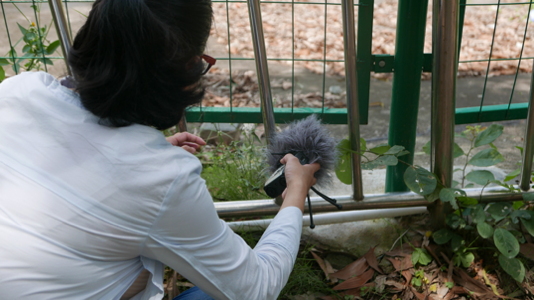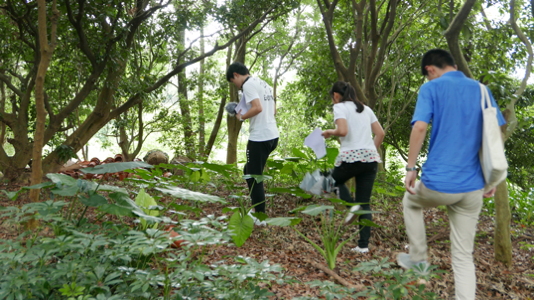Listen !
Two-day workshop on listening to our environment
We can close our eyes, but not our ears. And yet we don’t always pay attention to the many clues the aural world provides. Often we plug them up with earphones to listen to a different sound environment from where we currently are. This workshop aims to draw our attention to a sensory device we often neglect. Refining our perception will help participants to be more aware of our surroundings.
This workshop will also talk about our responsibility to shape a respectful sounding environment.
Each student needs to bring a notebook and pen. The use of electronic devices is not permitted.
First day – 3 hours
We will walk for about 10-15 minutes from the classroom to an outdoor space, which should have little sonic impact from traffic. During the walk, talking is not permitted. Each student should pay attention to the sonic environment.
Upon arrival, each student will relate to the class which sonic aspect was the most striking, something which surprised him.
Listening exercise 1 (two minutes):
While sitting together as a group, each student individually will take handwritten notes on all acoustic elements she observes in chronological order. Communication among the students is not allowed.
We then share our findings and try to assemble its most complete description.
Listening exercise 2 (five minutes):
While sitting together as a group, each student tries to remember all sonic signals during the five-minute period, without taking notes.
We will record the same sound scene with a portable recording device.
After the five minutes have passed, students are now asked to write down all elements they can remember in their order of appearance.
On the way back to the classroom students will observe sounds from their own bodies in relationship to the nearby environmental sounds. They are asked to observe the quietest environmental sound, which was observable.
Back in the classroom, each student will talk briefly about the quietest environmental sound she had observed and how that affected her.
We will then try to generate the most exhaustive list of the five-minute scene with input from everybody.
We will then listen to the five-minute recording to compare it to our collective impressions.
The first workshop day ends with a discussion on memory, surprise and emotional attachment to sonic events.
Homework
Pair up with another student. Together explore your environment and find a spot, where you encounter a particular interesting sounding environment. This might only happen at a specific time of the day. Record with a high-quality portable recorder a 3 minutes moment of this sound scene. Don’t record longer than 3 minutes!
Back home, listen to the 3 minutes and describe all sonic events in writing. Upload your recording and the written description to the class blog/shared drive.
Before the next class, together with your partner, listen to the sound scenes from each student pair and read the descriptions. Pick the scene both of you are most interested in (it can’t be your own recorded scene). Together prepare a 3-minutes aural presentation on how you perceive the scene and why you are interested in it. Talk about continuous and discrete sounds.
Reading before next class:
Schafer, Raymond Murray The Soundscape Publisher: Destiny Books (October 1, 1993) ISBN-10: 0892814551, ISBN-13: 978-0892814558
read the following chapters: part 1 chapters 1-4, part 4 chapter 14
Second day – 3 hours
The student pairs will give their short presentations about the preferred recorded soundscape. The ‘author’ of the soundscape in question will have a short moment to react to the presentation.
Discussion of the Murray Schafer text.
The workshop will terminate with a second group sound walk, where we will concentrate on the causes of the sounds and our social judgment : ‘disturbing’, ‘acceptable’, and ‘attractive’.

LEARNING OUTCOMES
– re-connecting with our hearing sense
– understanding ourselves as part of a complex sounding environment
– thinking about our responsibilities in regard of the urban soundscape

